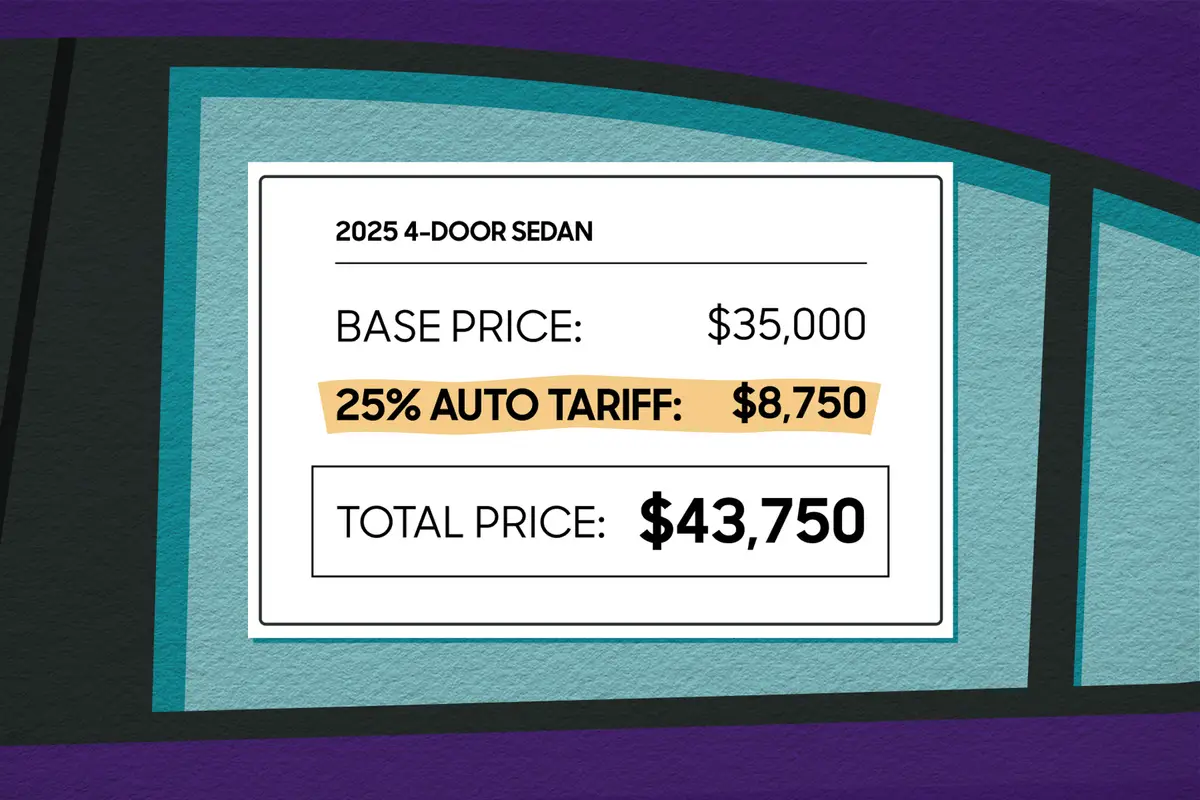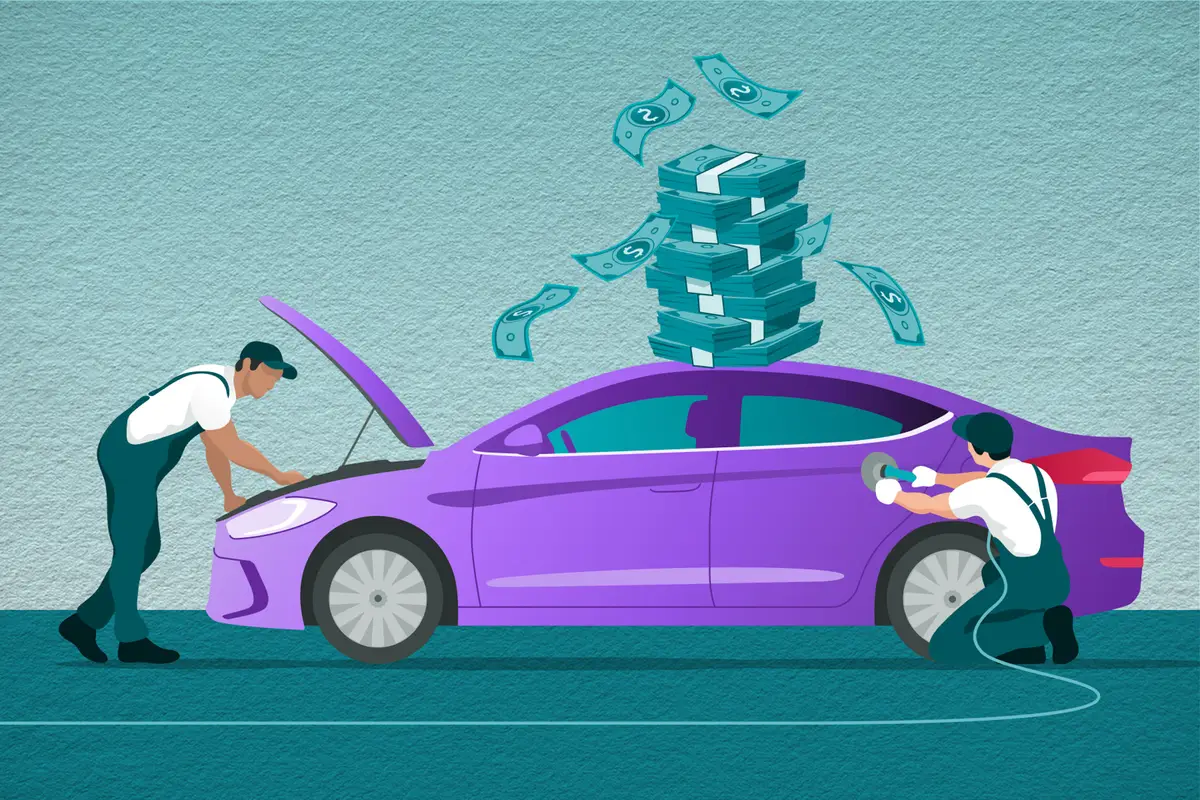Star-Telegram.com's view
Land Rover may have shot itself in the foot with the introduction of the all-new LR3 for 2005, a midsize premium SUV that replaces the somewhat stodgy Discovery model that had been around basically unchanged since 1994. Built on what Land Rover calls an “all-new” chassis platform that this British subsidiary of Ford Motor Co. spent a reported $1.2 billion to develop, the LR3 carries a base price range of $45,000-$50,000.
It’s a quite credible entry in the midpriced luxury sport utility segment, up against such competition as the Lexus GX 470, BMW X5, Mercedes-Benz ML500 and Acura MDX.
Unfortunately for Land Rover, the new LR3 also competes very well against the company’s own $70,000 Range Rover – so much so that any practical person would just buy the uplevel LR3 HSE model and pocket the $20,000 savings.
Looking at the specifications, the LR3 is nearly identical in size to the newest generation of the Range Rover, which debuted three years ago on a platform developed by or in conjunction with former owner BMW, the German luxury carmaker.
Although the LR3 is on an all-new chassis, there are a lot of similarities with the Range Rover, including a four-wheel independent air suspension and a body that has an integrated two-rail frame, rather than the previous body-on-steel-frame arrangement of the Discovery.
There are some big differences – the Range Rover has aluminum doors, hood and front qquarter panels, while the LR3’s body is all zinc-coated steel, for instance. But for the life of me I can’t tell much difference in driving and handling, which is excellent both on- and off-road for both vehicles.
At first glance, it might seem that the engines are the same as well. They both are V-8s with nearly identical specs – including 268 cubic inches of displacement. The Range Rover’s 4.4-liter engine has 282 horsepower, while the LR3’s is rated at 300 hp.; The Range Rover has 325 foot-pounds of torque vs. 315 for the LR3.
Land Rover says, however, that the Range Rover’s engine is a BMW design, while the LR3’s is derived from a 4.2-liter Jaguar engine, which got several millions of dollars worth of redevelopment to make it work in a heavy truck like the LR3.
What should be significant to anyone considering the Range Rover: The LR3’s slightly higher horsepower actually gives it better performance – zero to 60 mph in eight seconds compared with nine seconds in the Range Rover; top speed of 130 mph for the LR3 and 122 mph for the Range Rover.
And both vehicles weigh about the same – 5,426 pounds for the LR3 vs. 5,379 for the Range Rover. Both have a clamshell hood and two-piece tailgate.
But for those who like to do serious trail driving, here is a plus for the less-expensive LR3: I believe it has a better four-wheel-drive setup, thanks to its nifty “terrain response” system that allows the driver to automatically choose one of five settings for different road conditions. This, for now, is exclusive to the LR3.
The settings are general driving, grass/gravel/snow for slippery surfaces, and three separate off-road modes: mud/ruts, sand, and rock crawling. These last three make use of low-range gearing, locking center differential and other technology to give the LR3 an awesome ability to go just about anywhere the driver might choose to take it.
Of course, if you do plan to go off-road – and 45 percent of Land Rover owners do so, compared with about 10 percent of owners of other SUVs – it might be more practical to to negotiate rugged trails in a $50,000 vehicle rather than a $70,000 one.
There will be those who buy the Range Rover because of its snob appeal, just like those who buy a Lexus LX 470 over the nearly identical Toyota Land Rover that costs thousands less.
The Land Rover still doesn’t have the cachet that the Range Rover name has. The Range Rover has been the company’s top U.S. offering since coming here in 1987, and has been a darling of the moneyed set. At one point, I went off-road with entertainer Jimmy Buffet in one of his four Range Rovers, at a time when these vehicles were the most luxurious SUVs on the planet.
But as a practical person, I could live very easily with the LR3, which is eons better than the Discovery model that it replaced.
The exterior is also quite similar to that of the Range Rover, yet it still has some of the looks of the boxy Discovery.
Inside, the ergonomics are quite an improvement, with, finally, sport-style front bucket seats that actually are comfortable for long drives; decent leg room for middle-row passengers; and two single-passenger, forward-facing third-row seats (a $1,250 option) that allow the LR3 to hold up to seven people in relative comfort.
Like the new Chrysler minivans, the LR3’s middle and rear seats can be folded completely into the floor to create a 90 square-foot cargo area. With the third row of seats in place, however, cargo space is limited to just 9.9 cubic feet.
The LR3 retains the theater-style seating of the Discovery, which gives passengers in each row a good view to the front, and unlike some other SUVs, all of the side windows roll all the way down.
Ride comfort on the highway is vastly improved by the air-shock suspension, which replaces the two solid axles and steel springs of the Discovery. This is a truck product that actually rides like a car.
As though someone at Land Rover realized that there might actually be people sitting in all of the seats for extended road trips at least some of the time, this vehicle has very usable cupholders for everyone.
The interior designers and engineers did go a little nuts with the cockpit technology, however. Just as with the Range Rover, there is a lot of gadgetry that will take some training and getting used to before a new owner feels comfortable driving the LR3. Just figuring out how to operate the audio system could be a challenge. Don’t let this turn you off, however; the dealerships have great personnel to help you understand all you need to know about your LR3 should you choose to buy one.
Exterior styling is not what one would call sleek or beautiful, either. This is still a box on wheels that depends more on its Land Rover name than its good looks to be accepted at the Country Club. But this kind of styling has served Land Rover well, and doesn’t seem to detract from its vehicles’ consumer appeal.
It’s also very high – 74.5 inches – which might limit its use in some garages. This gives the vehicle a higher center of gravity than some lower, crossover-style SUVs, but the vehicle actually is very stable in turns.
As with most of the truck-based premium SUVs, the LR3 is going to appeal to men much more than to women, so it won’t be as much a soccer-mom vehicle as the carlike Lexus RX 330 or Acura MDX. But those of us who do truly appreciate a real utility vehicle – with such awesome off-road capabilities – will be pleased with a vehicle such as the LR3.
Fuel economy isn’t great, at 14 miles per gallon city/18 highway, but that’s about par for this class of vehicle, and better than that of some really popular competitors such as the Hummer H2 (don’t even ask).
Two trim levels are offered: the base SE model, with a starting price of $44,995 (including freight), and our test vehicle, the uplevel HSE version ($49,995).
Standard amenities include leather seats, dual-zone automatic climate control, cruise control, power windows/mirrors/door locks, a 300-watt Harmon-Kardon AM/FM/compact-disc stereo with in-dash changer and nine speakers, traction control, six-speed automatic transmission with manual-shift feature, leather-wrapped steering wheel with touch controls, aluminum-alloy wheels and more.
With the HSE, the extra $5,000 buys a driver information system, front fog lights, garage-door opener, automatic headlights with power washers, memory seats, automatic day/night mirror, DVD/GPS navigation system with a cool three-dimensional map display, rear parking assist, rain-sensing front wipers, and an upgrade to a 550-watt digital audio system with 14 speakers.
To get fancier stuff such as woodgrain interior trim, you’ll have to upgrade to the $70,000 Range Rover, however.
Extras on our test HSE model included a cold-climate package ($1,050), a “heavy-duty package” ($625), rear climate control ($950), and the rear seat package, which included headphone jacks and audio controls for the third row.
Total sticker for our vehicle was $53,870, including the options and $665 freight. The tank holds 22.8 gallons of fuel, and unleaded premium is required for maximum performance out of the high-compression engine.
Land Rover builds the LR3 at its plant in Solihull, United Kingdom.
At a Glance – 2005 Land Rover LR3 The package: Midsize, five-door, five- or seven-passenger, V-8 powered, fulltime four-wheel-drive, premium sport utility. Highlights: This all-new vehicle, based on a new chassis quite similar to the BMW-developed platform used for the newest Range Rover, replaces the Discovery for 2005 and fills the gap between the entry level Freelander and the upscale Range Rover, with prices that are competitive with other midsize premium SUVs. A big difference is the extra power of a V-8 engine; over last year’s Discovery. Negatives: Boxy, uninspired styling; high profile. Engine: 4.4-liter V-8. Transmission: Six-speed automatic; two-speed transfer case with full-time four-wheel drive. Power/torque: 300 hp./315 foot-pounds. Length: 190.9 inches. Curb weight: 5,426-5,796 pounds. Brakes, front/rear: Disc/disc, antilock. Cargo capacity: 9.9 cubic feet (with third row seats in place); 42-44.5 cubic feet with third row folded; 90 cubic feet with middle- and third-row seats folded. Trailer-towing capacity: 5,500 pounds (on the highway). Fuel capacity/type: 22.8 gallons/unleaded premium. EPA fuel economy: 14 miles per gallon city/18 highway. Major competitors: Lexus GX 470, BMW X5, Mercedes-Benz ML500, Lincoln Aviator, GMC Envoy XL Denali, Hummer H2, Acura MDX, Volkswagen Touareg V-8, Volvo XC90 V-8, Porsche Cayenne V-8 (normally aspirated). Base prices: $44,330 (SE), $49,330 (HSE) plus $665 freight. Price as tested: $53,870 (HSE with options and freight). On the Road rating: **** (four stars out of five).
Prices shown are manufacturer’s suggested retail; actual selling price may vary according to manufacturer and/or dealer rebates, discounts and incentives, if any.
G. Chambers Williams III is staff automotive columnist for the San Antonio Express-News and former transportation writer for the Star-Telegram. His automotive columns have appeared regularly in the Star-Telegram since 1995. Contact him at (210) 250-3236; chambers@star-telegram.com.
Latest news



